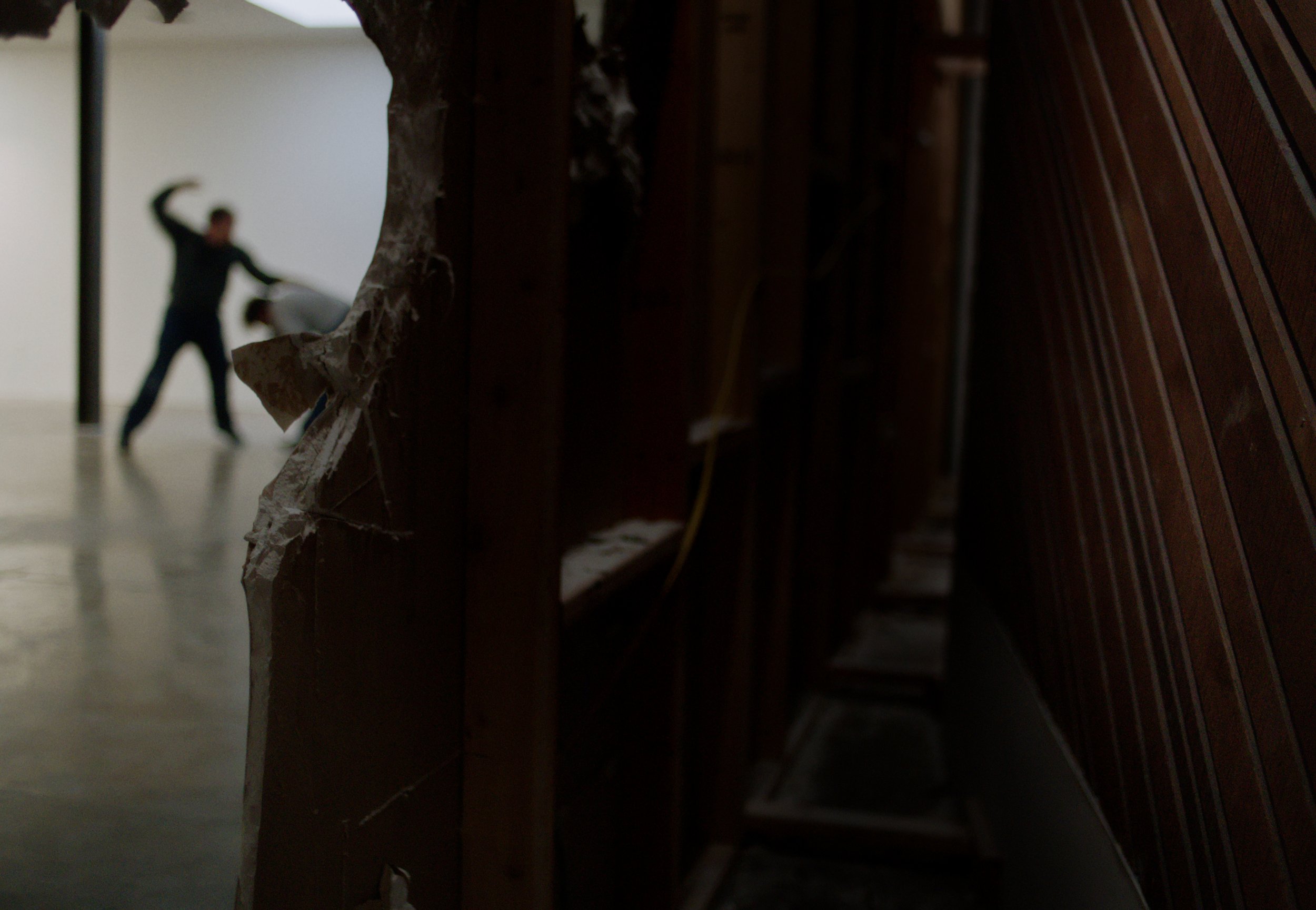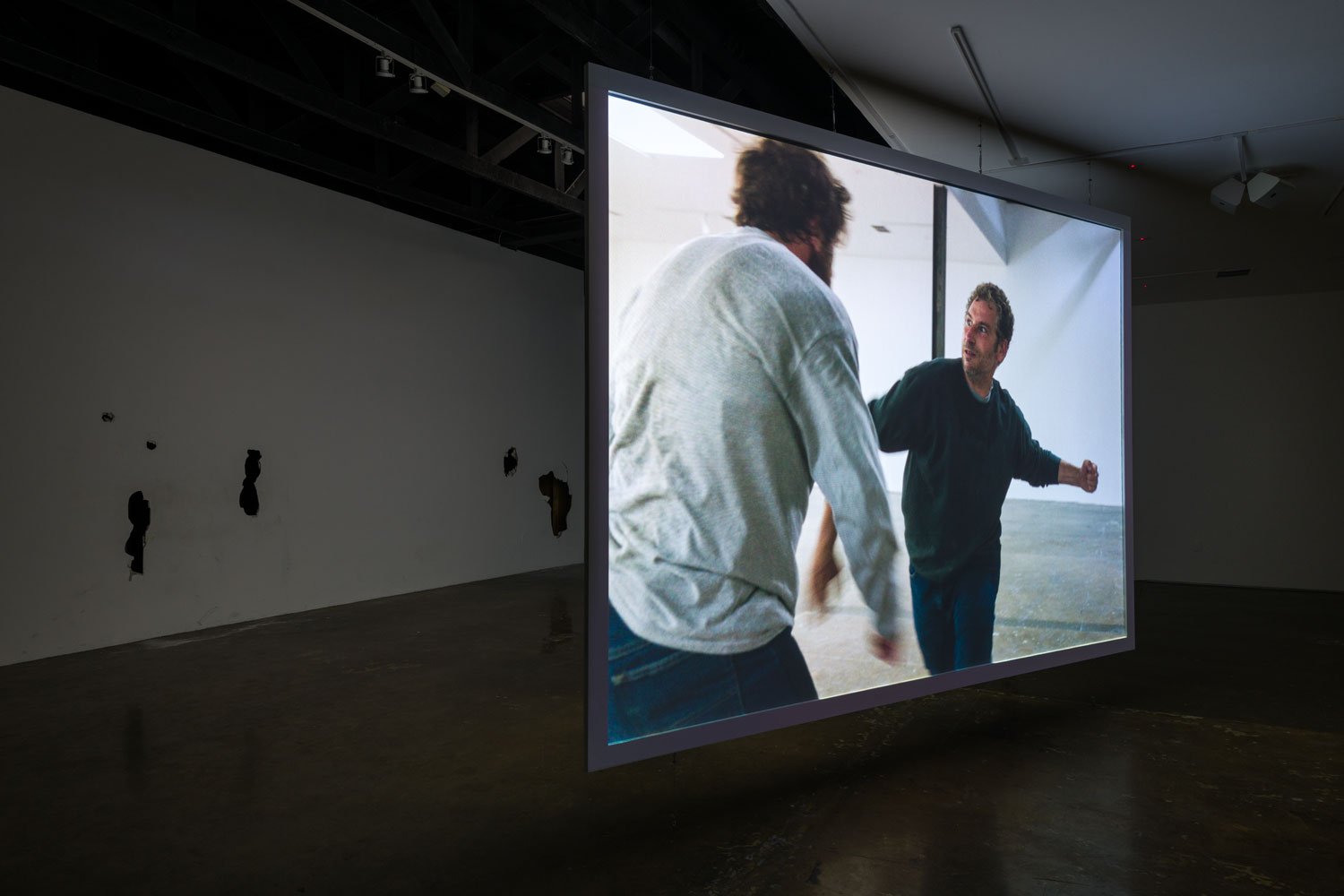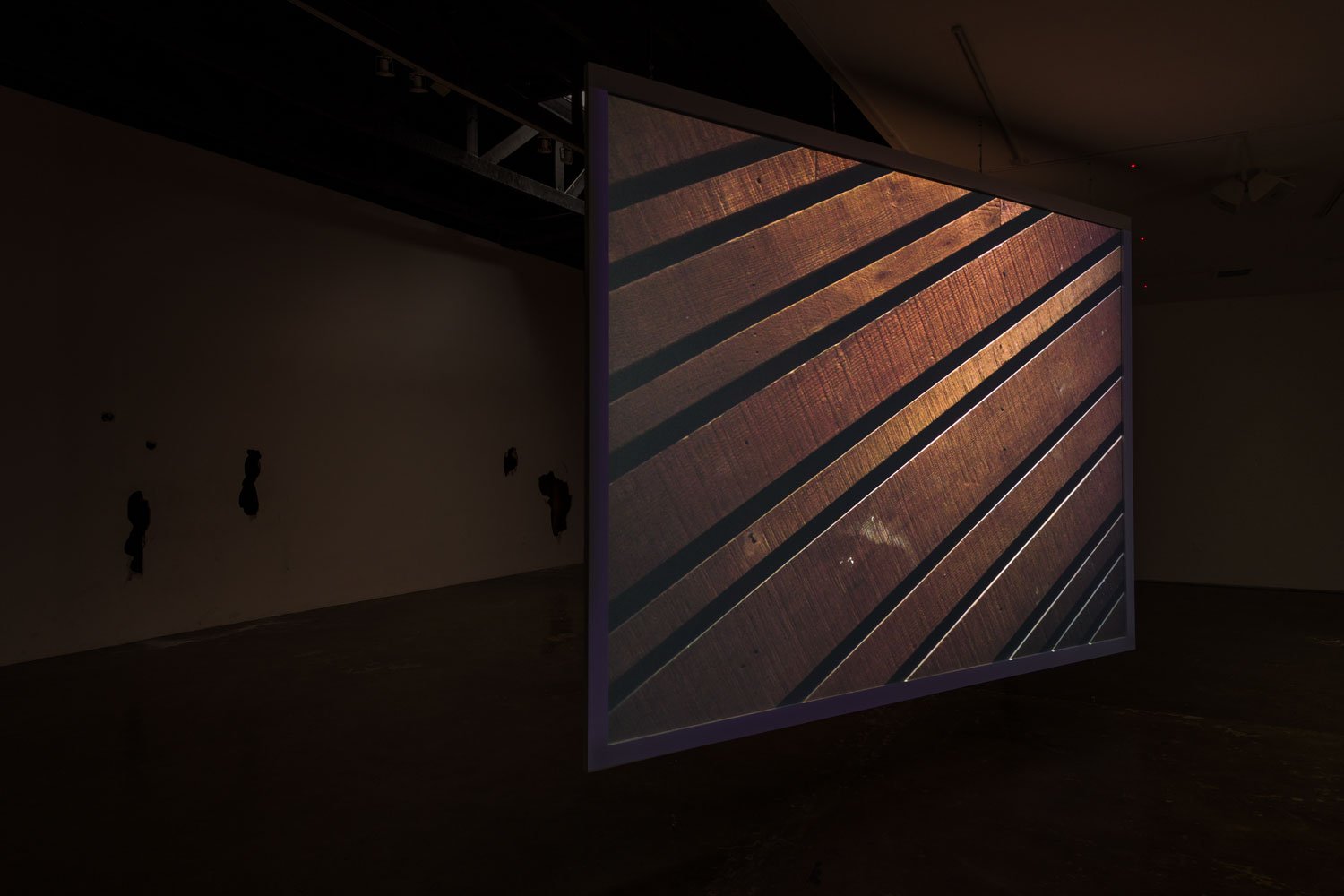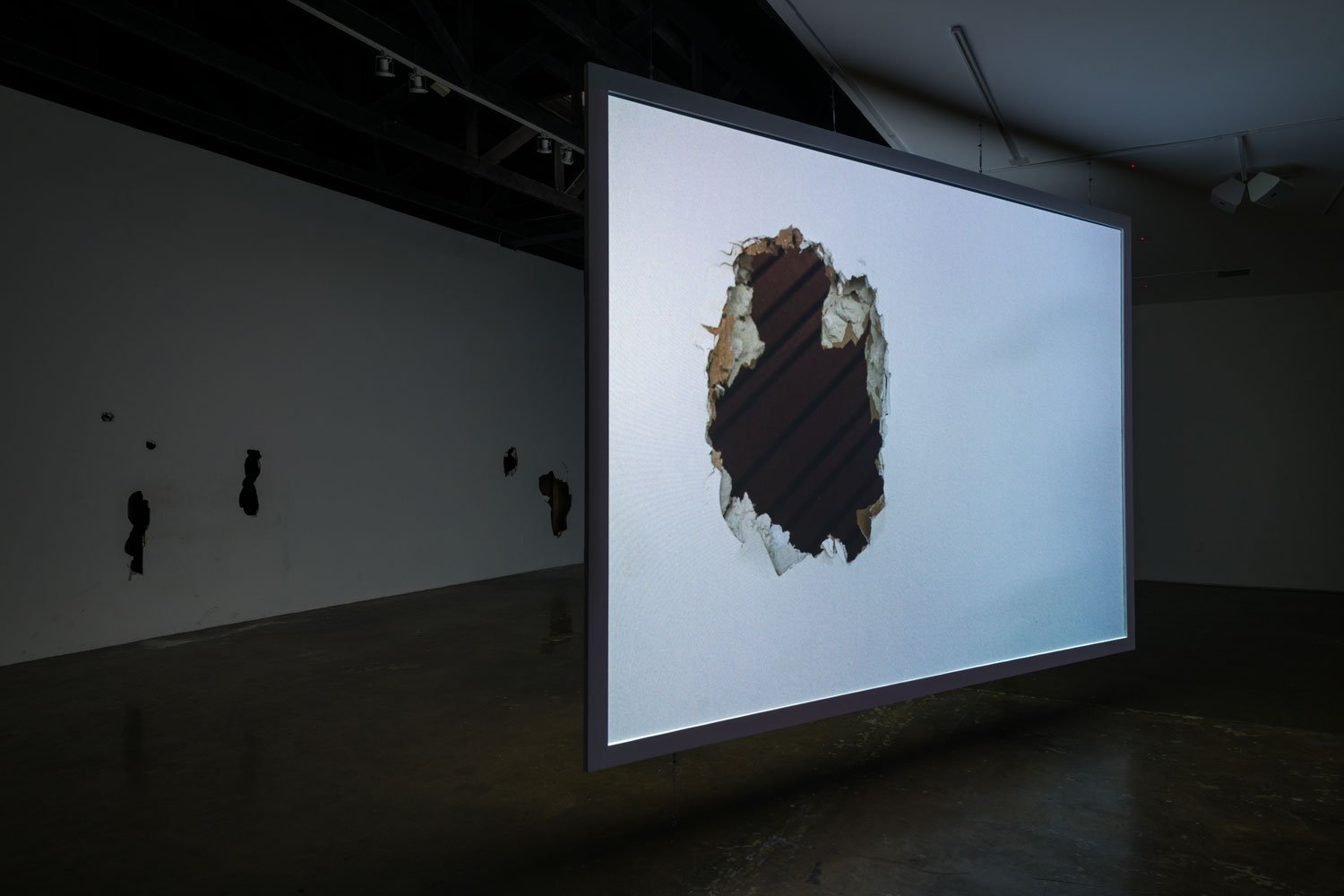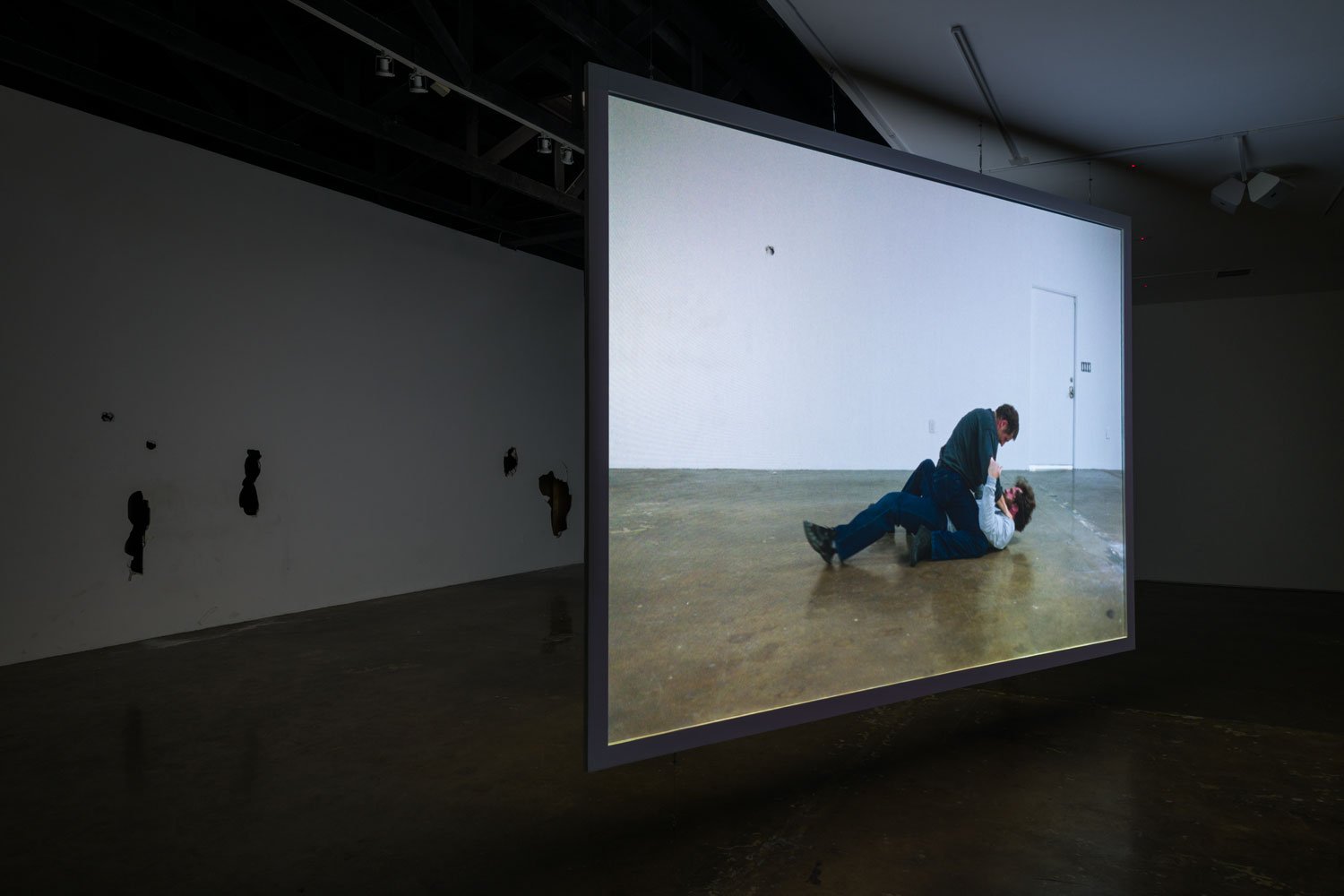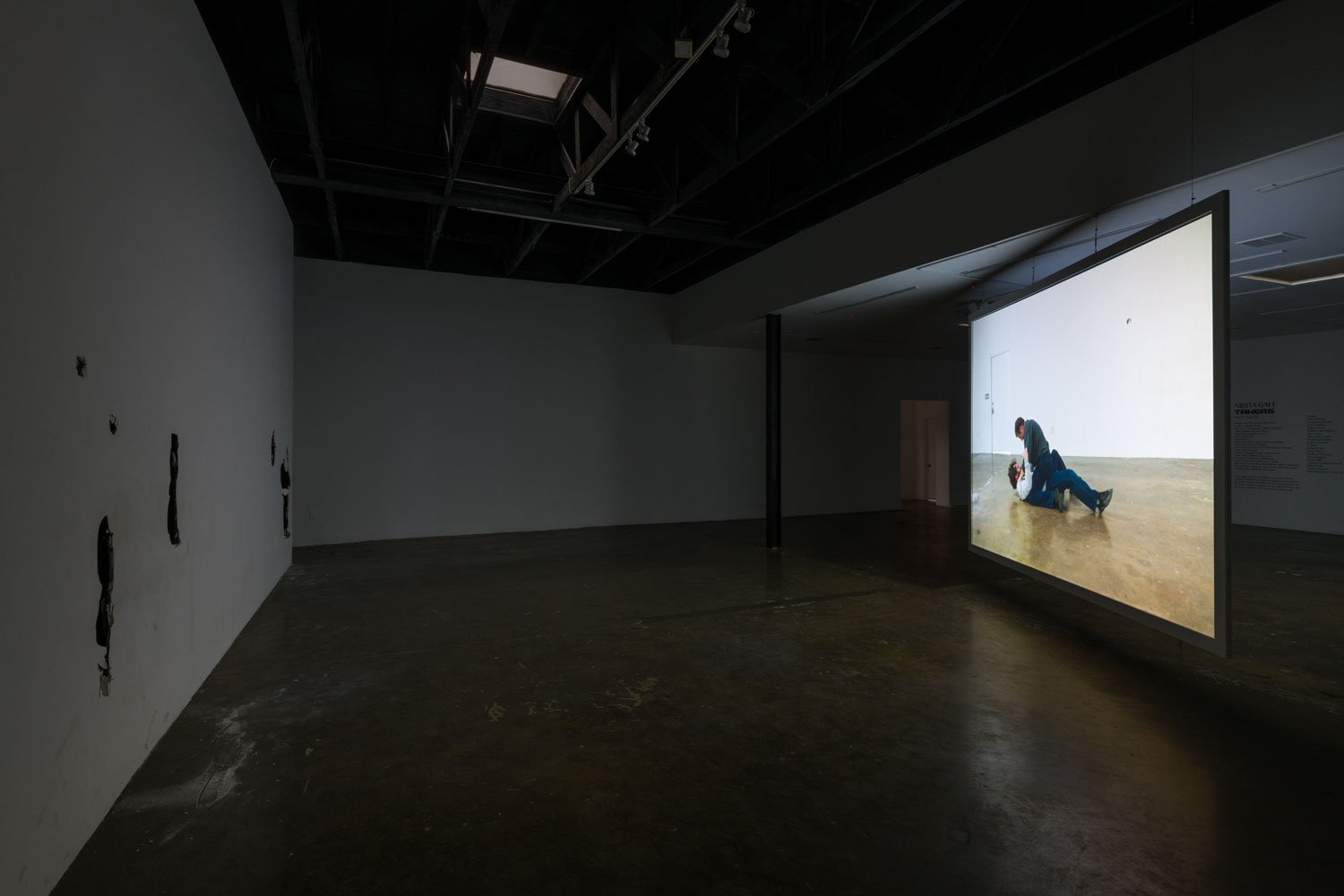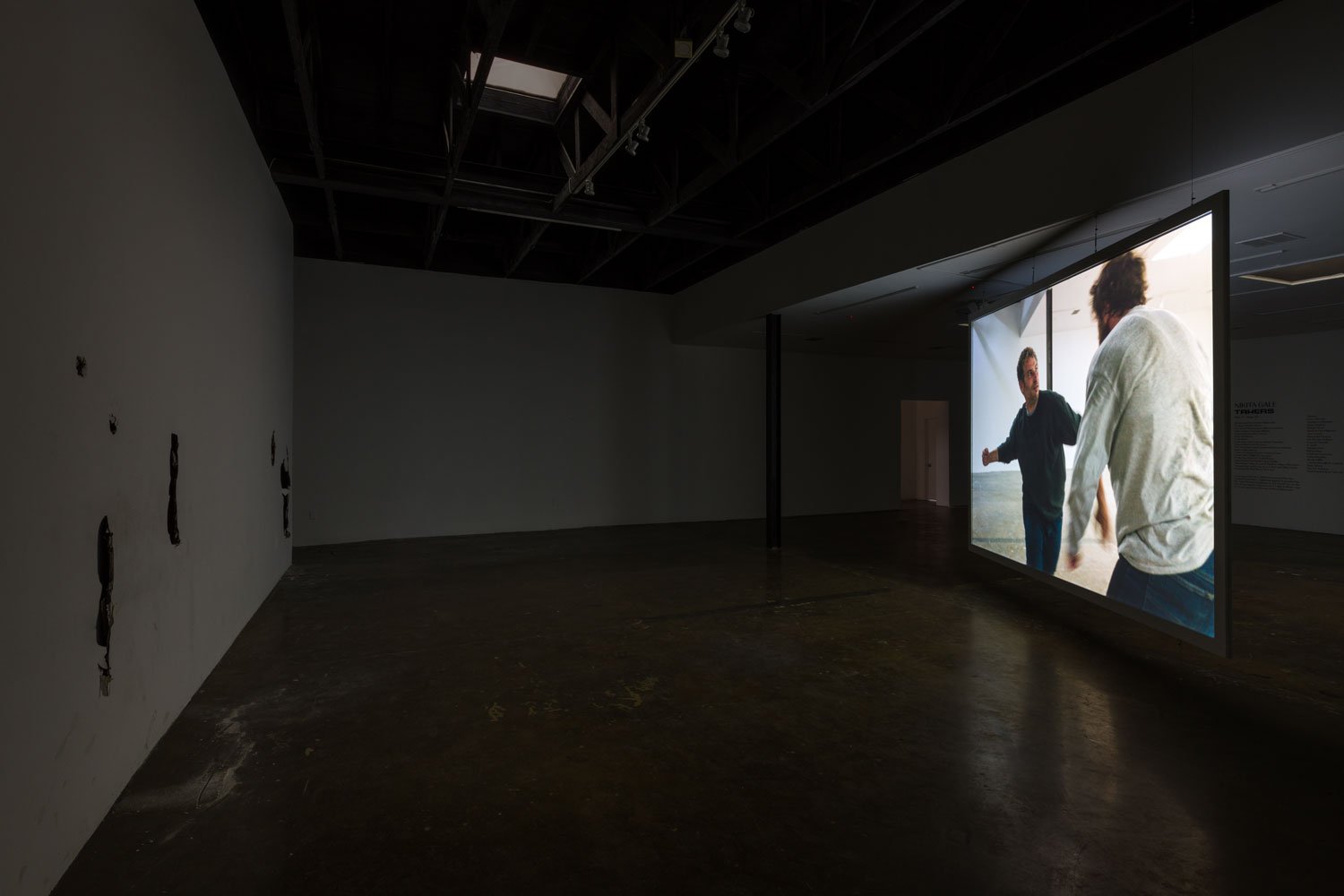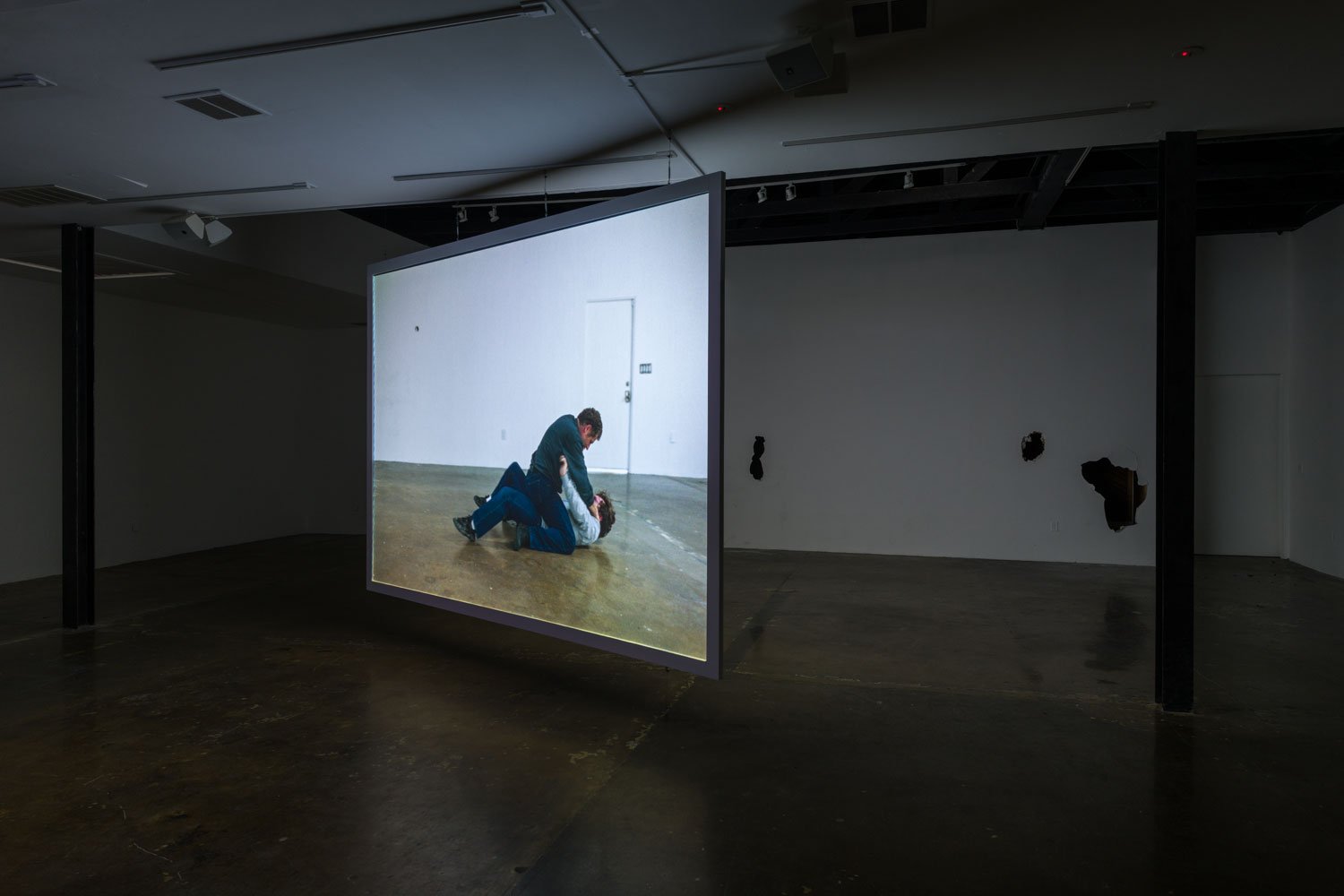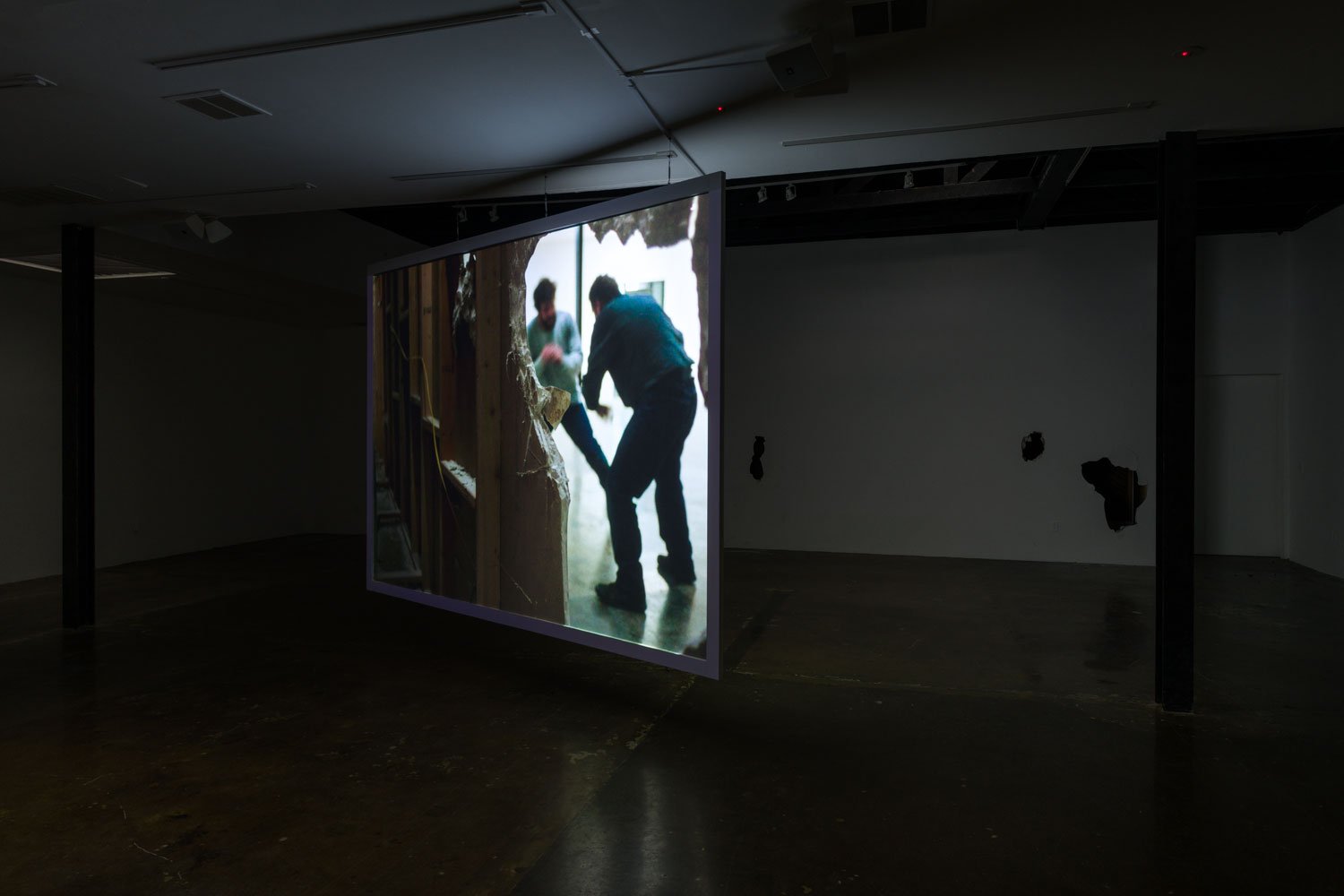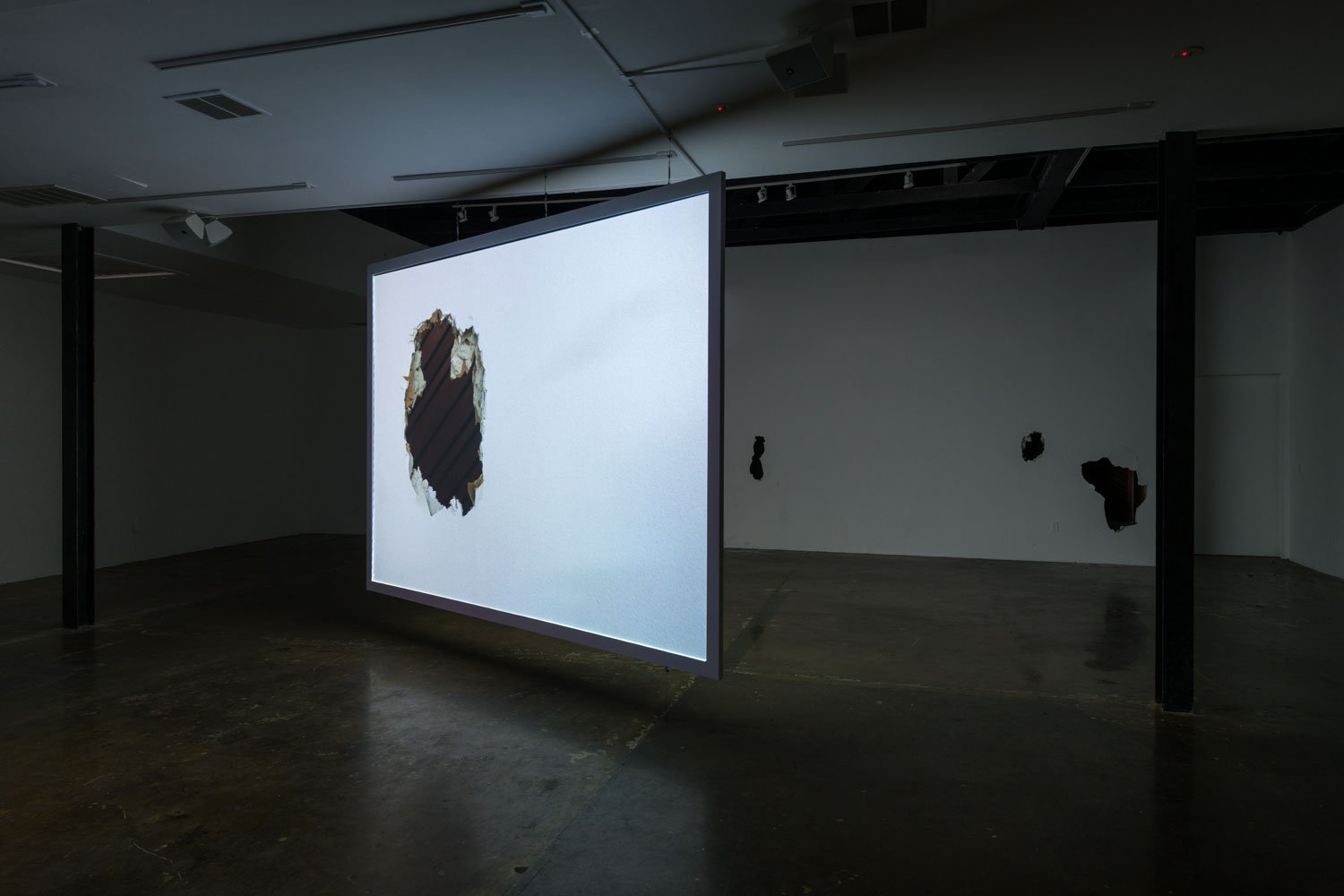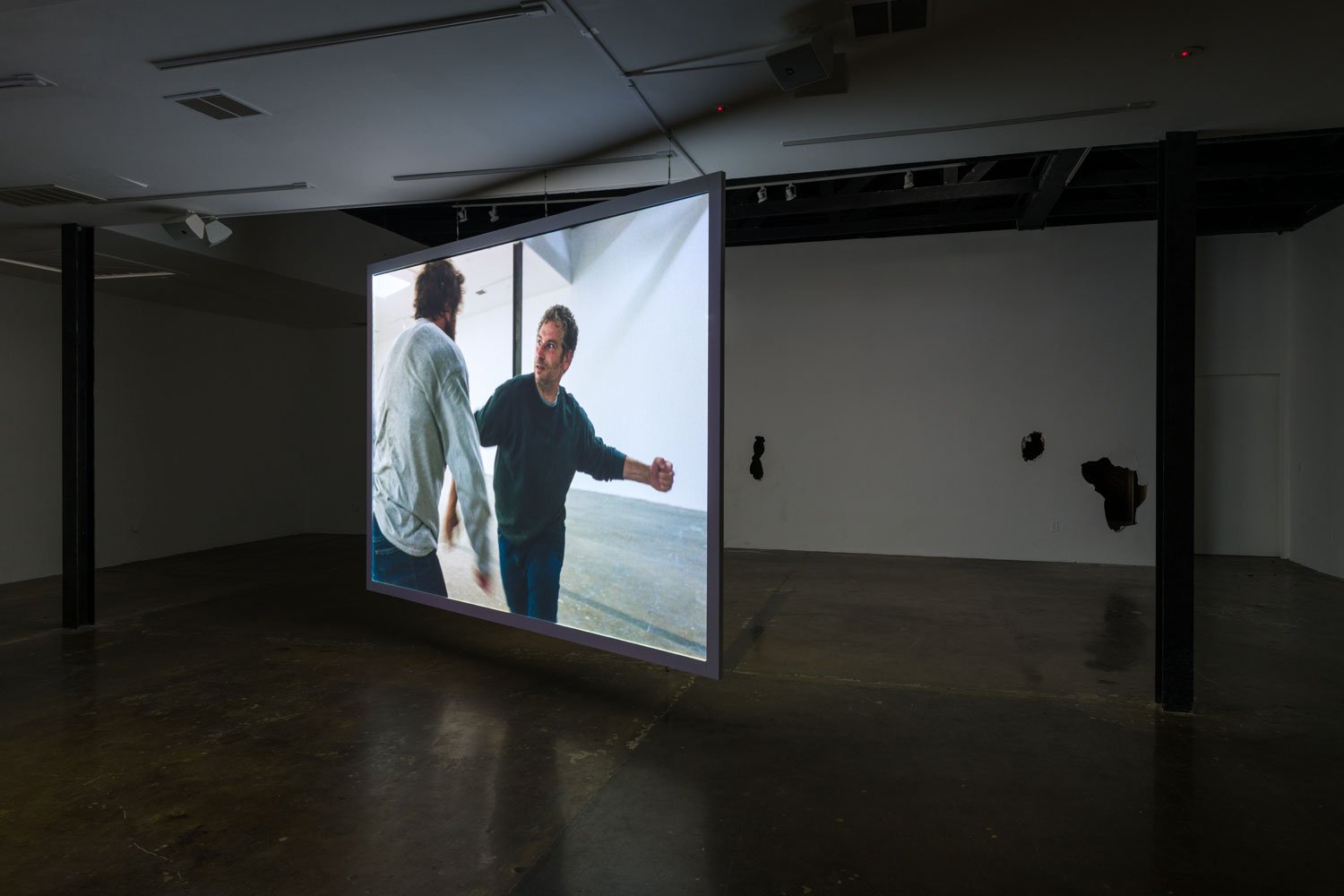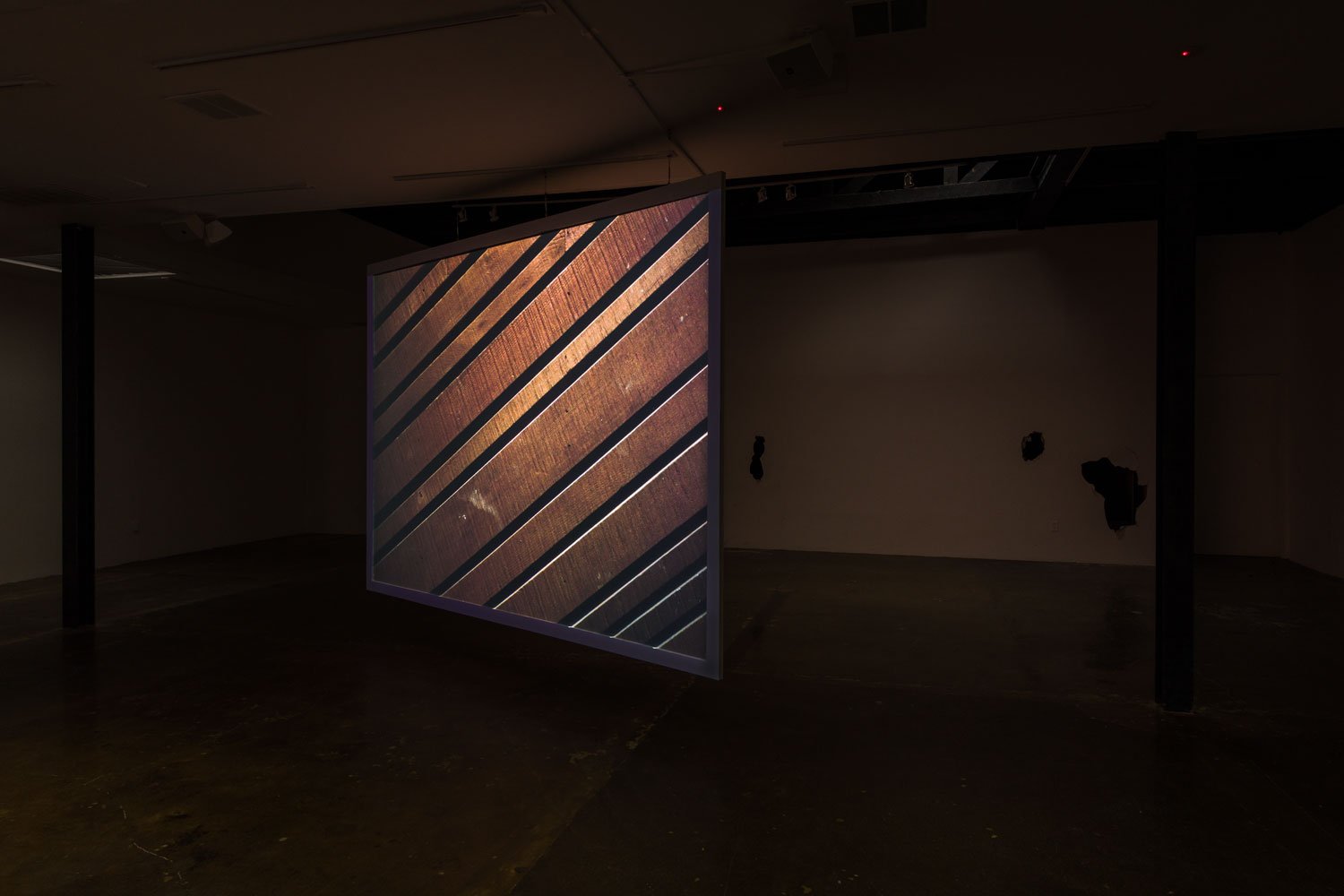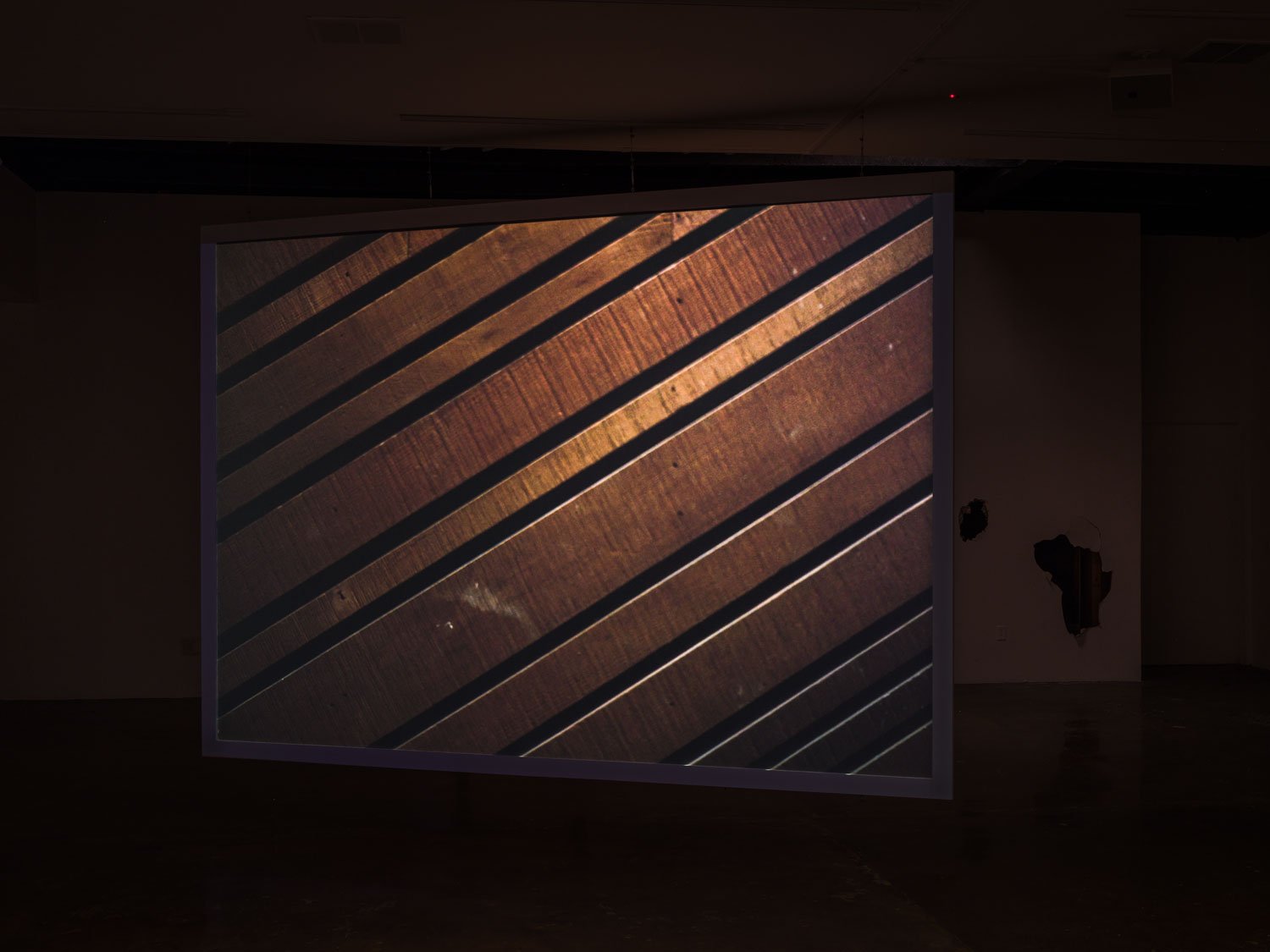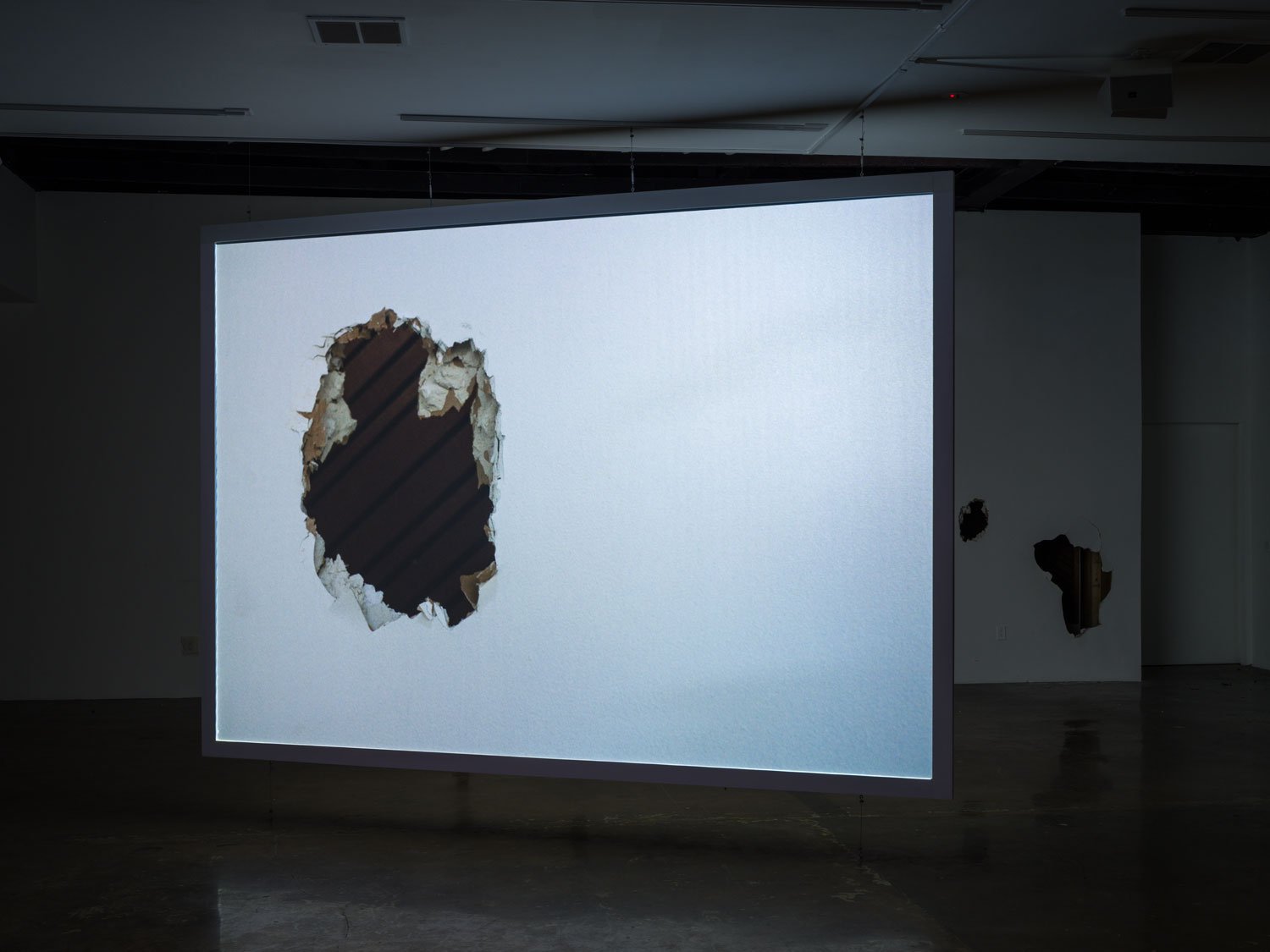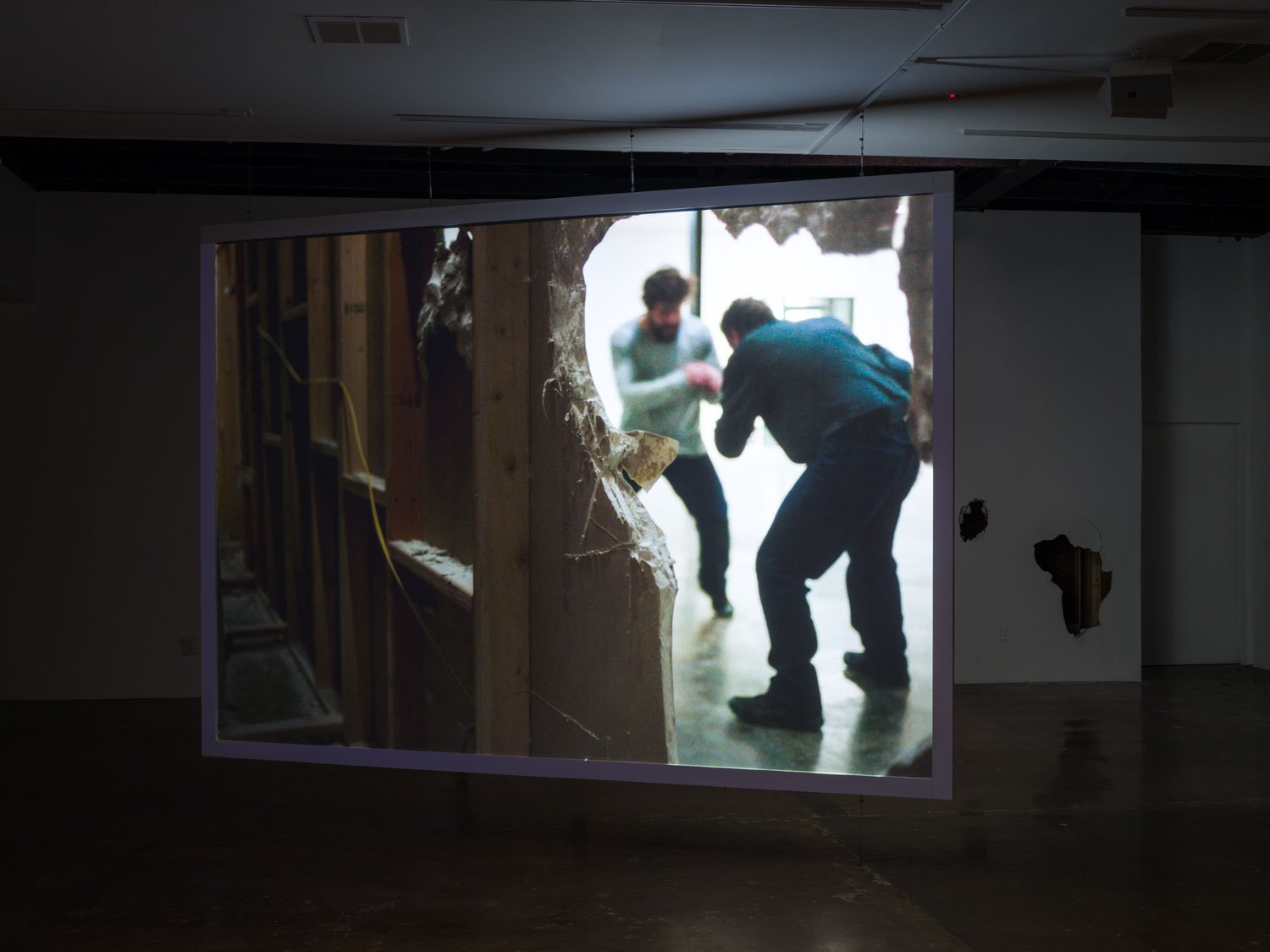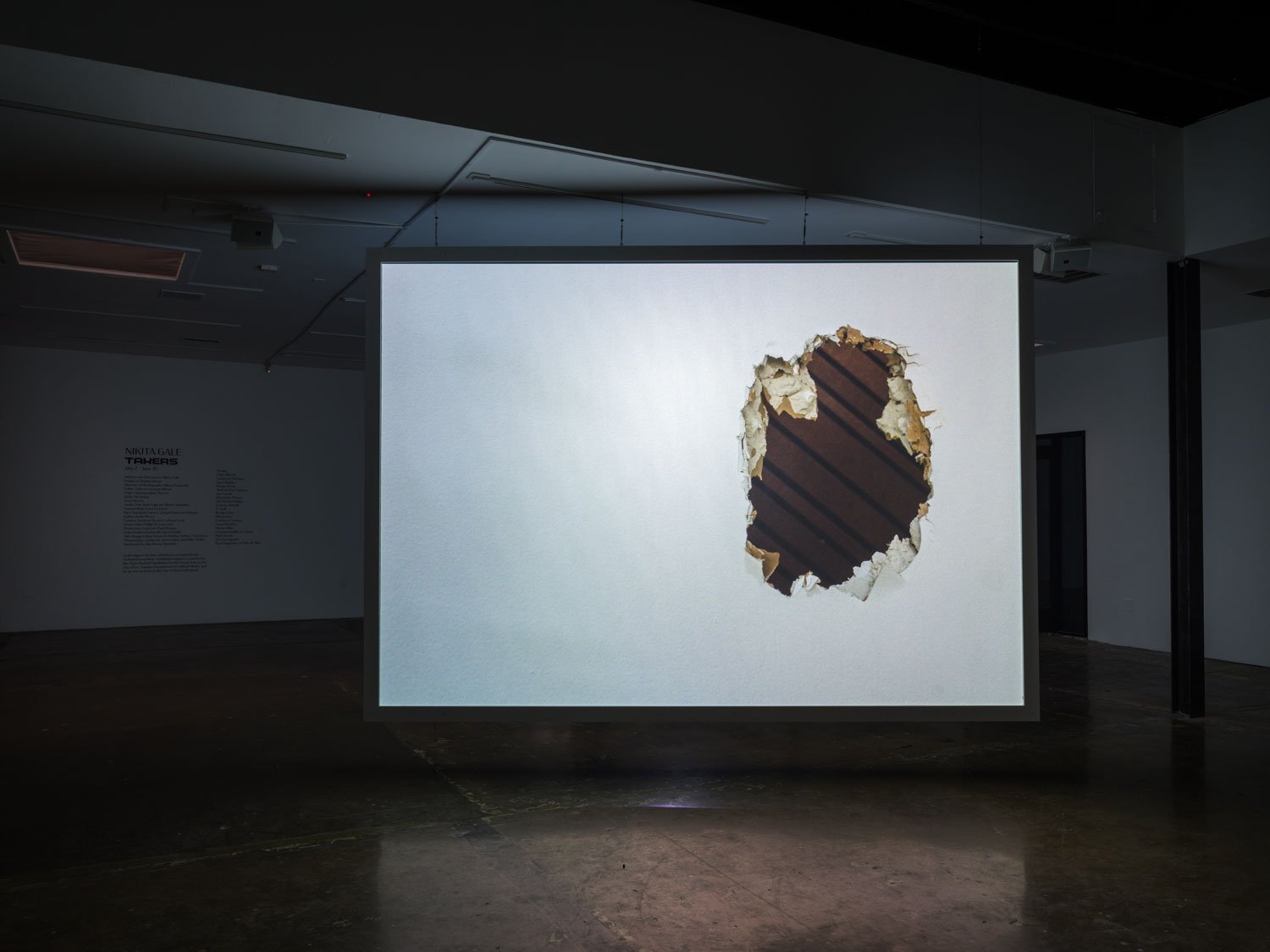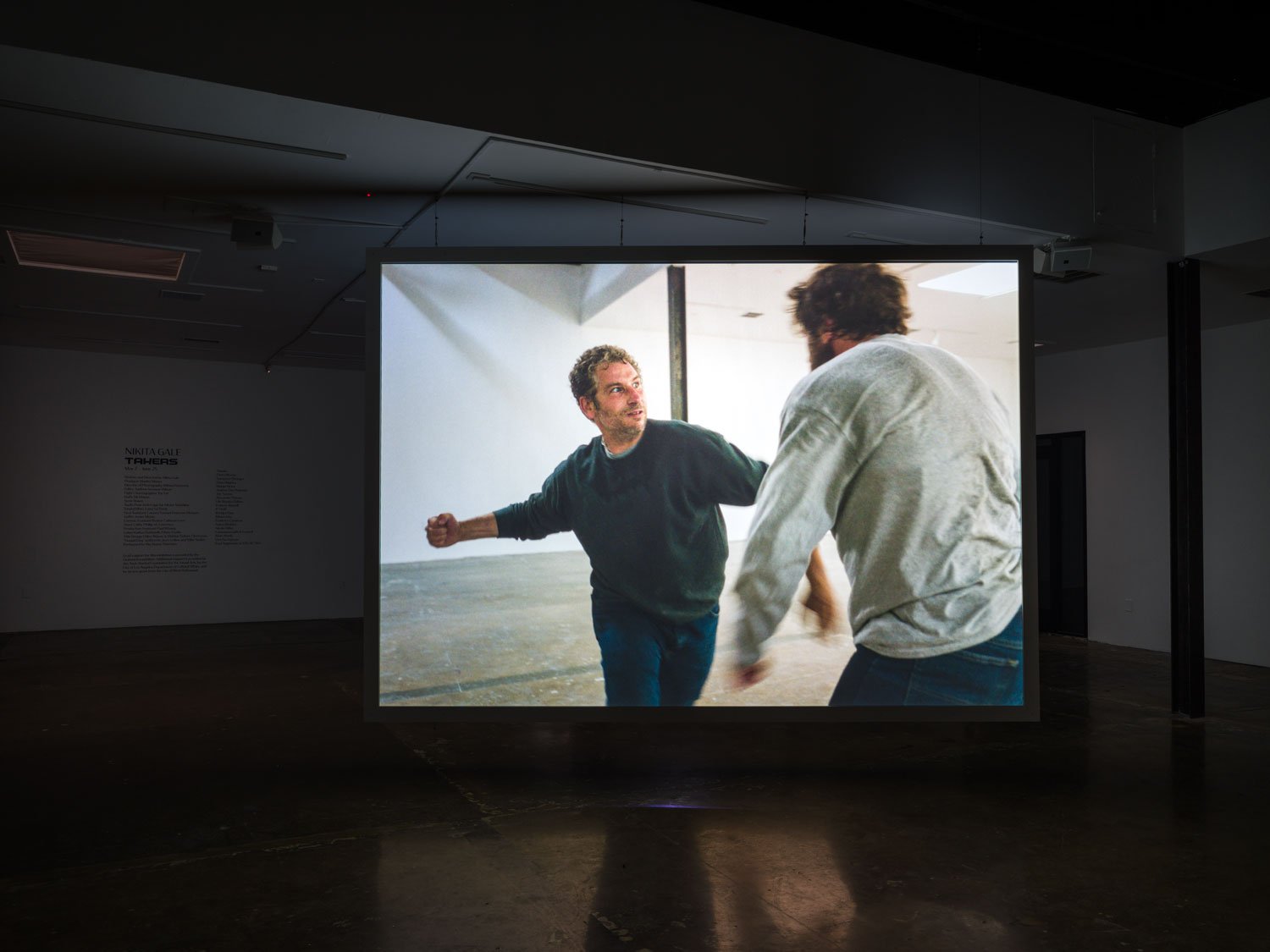takers
nikita gale
05.07 // 06.25
nikita gale
Talk about knock-down, drag out. Takers, a new video by Los Angeles-based artist Nikita Gale, consists of a fight scene that takes this figure of speech quite literally. Projected in the gallery where it was filmed, it features two men in a no-holds-barred brawl over what we don’t know. But does it matter why, or for how long they’ve been at it? Weighing in at 3 minutes, the scene is grueling, relentless, and in the absence of any rhyme or reason as to why they fight, mindless. We are dropped in on the action at a random point. There is no verbal exchange between the fighters, only grunts, groans and yelps as they kick, punch and head butt their way seemingly in and out of exhaustion. If the struggle has a source (money, food, a mate?), it has long since been abandoned. The fight is an end itself. The violence is not only gratuitous, it is a sustained gratuity, occasionally comedic but mostly cruel if not brutal.
The empty gallery space, come cage match arena, makes for a visually stark mise en scène, one offset by Hound Dog, Big Mama Thornton’s seminal 1953 recording, which plays muffled in the background, as though it were coming from another room. Incidental to the fight, the song bursts to the foreground, becoming louder and clearer, when the wall is punctured by the fighter’s kicks and punches. While the fighters can be credited with making the holes, it’s as if the wall were already under an internal pressure generated by Thornton’s powerful voice. Through an unwitting violence, Thornton’s irrepressible spirit is being released from a dry wall purgatory.
LAXART is located in the former home of Radio Recorders, the storied recording studio where Thornton minted Hound Dog. In 1952, at the time of Hound Dog’s recording, Radio Recorders was spread over three facilities. Hound Dog was recorded in the studio referred to as the annex, located two blocks from the main studio that is now LAXART. Although Thornton did not record Hound Dog in what is now LAXART’s gallery space, the artist who made the song iconic recorded three records here, none other than Elvis Presley.
Presley’s rendition of Hound Dog was recorded in 1956 at RCA in New York. While Hound Dog topped the R&B charts for Thornton, selling over half a million copies, Presley’s version is one of the biggest selling singles of all time, with over 10 million sales globally. No one disputes rock n’ roll’s debt to black culture. It’s been acknowledged far and wide for generations with Hound Dog being a touchstone of the discussion. But Thornton recorded it first, and in a manner that not only made for an outstanding R&B single, but one that would help usher in a genre.
Despite Thornton’s Hound Dog being the only one played in the gallery, Presley is no less present, if only by virtue of having recorded in this very room. That said, there is a vast discrepancy in how Thornton and Presley are signified in Takers. Thornton is signified directly, while Presley is signified indirectly, inversely proportionate to their degrees of notoriety. Everyone knows Elvis Presley, but not everyone knows Big Mama Thornton. In signifying Thornton directly, by way of a song she recorded first, that was then made far more popular by Presley, Takers cannot fail to call attention to this fact. But while Takers wants to call attention to the gross discrepancy in their fame, it blatantly refuses to do so on the terms of civil discourse. For all that is said and written about a debt to black culture, Gale does not want to lose sight of the violence, pain, tragedy, and suffering those artists not only endured but that also formed the basis of a creativity commercially mined at sites such as Radio Recorders. Any anger regarding those sentiments, however, is displaced on to two, notably white, punch drunk mopes, oblivious to Thornton. There is no condemnation, just a violence severed from any source; a reified, abstracted violence, free floating but standing in for a story we know all the same.
Lead support for this exhibition is provided by the Graham Foundation. Additional support is provided by the Andy Warhol Foundation for the Visual Arts, by an arts grant from the City of West Hollywood, and by the City of Los Angeles Department of Cultural Affairs.
The show will be open during normal operating hours—Tuesday through Saturday, 11am to 6pm—beginning May 7, 2022.
